FPS can be configured either in online mode (that is, while the FPS server is running) or offline mode (when the FPS server is not running) using the Fiorano eStudio.
Offline mode configuration can be done using the Profile Manager, which can be accessed from the Fiorano eStudio. When a configuration is modified and saved, changes persist and are applied when the server is restarted.
Online configuration of a Server can be performed using the JMX explorer, which can be accessed from the Fiorano eStudio. Changes made using JMX are applied onto the Server that is currently running and persist so as to be reapplied when restarting. However, some of the Server configurations (such as server ports, memory settings and others) are applied only after the restart of the Server.
Server Ports Configuration
The FPS server communicates with the Enterprise Server using the Server Port and with the JMX interface through the RMI Port. The Configurations of these ports is described in more detail below.
Server Ports
Ports opened to facilitate communication between FPS and Enterprise server are known as Server Ports. Server Ports can be configured with the FPS Server running (online mode) as well as by stopping the servers (offline mode).
Offline Mode
There are two ways by which Peer Server Port can be configured in offline mode.
Editing the XML file
- Open the Configs.xml file from the FPS server profile in Studio by navigating through FIORANO_HOME > esb > server > profiles > [profile name] > FPS > conf in the system.

Figure 1: Locating the FPS profile configuration file
- In the Configs.xml file, search for CONNECTION_MANAGER tag and replace the value of the Port property under the tag with the new port number.

Figure 2: Making changes in the FPS profile configuration file
- Close the file after saving it and start FPS server.
From Profile Manager in eStudio
Perform the following actions in eStudio:
- In Profile Manager (Show View > Other > Fiorano > Profile Management) window, right-click Profiles node and load FPS profile.
- Click the FPS node and navigate through Fiorano > SocketAdapters > port-1 and select the ConnectionManager node.
In the Properties of ConnectionManager panel displayed on the right side, replace the value of the Port property with the new one.
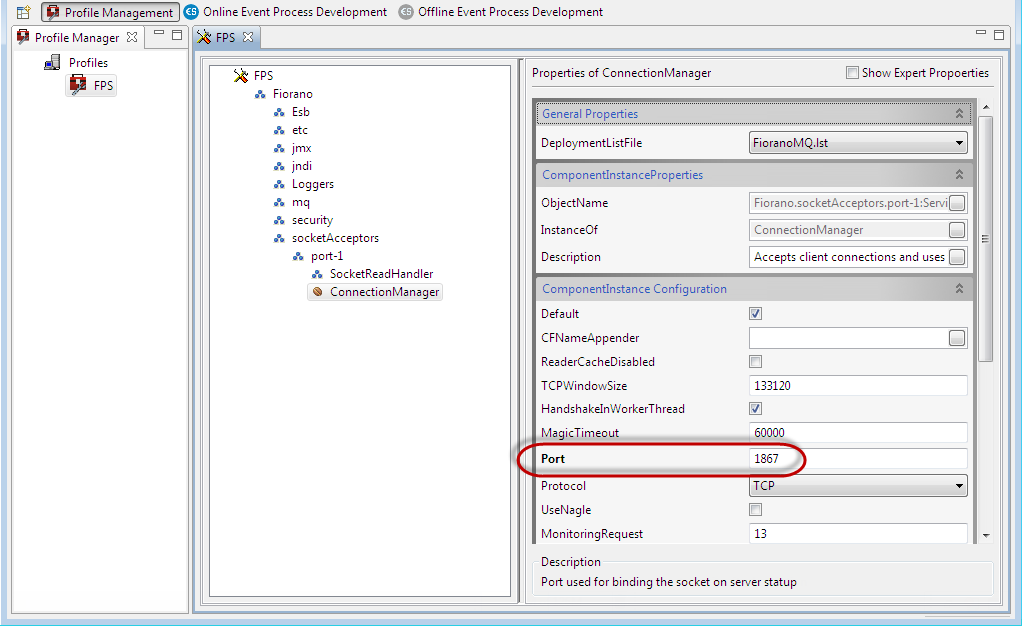
Figure 3: FPSServerPort- Right-click FPS node and select Save to apply the changes made in the profile.
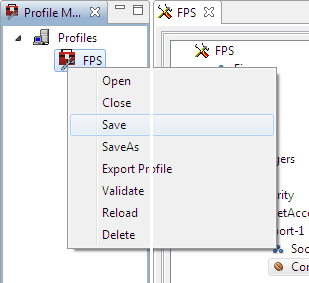
Figure 4: Saving the Profile changes
- Start FPS server.
Online Mode
Changes can be done with the FPS server running. Following steps illustrate the configuration of Server Ports using the online mode:
- In Server Connections (Show View > Other > Fiorano > Connection Manager) window, right-click FPS-JMX node and select Login option to load FPS-JMX node.
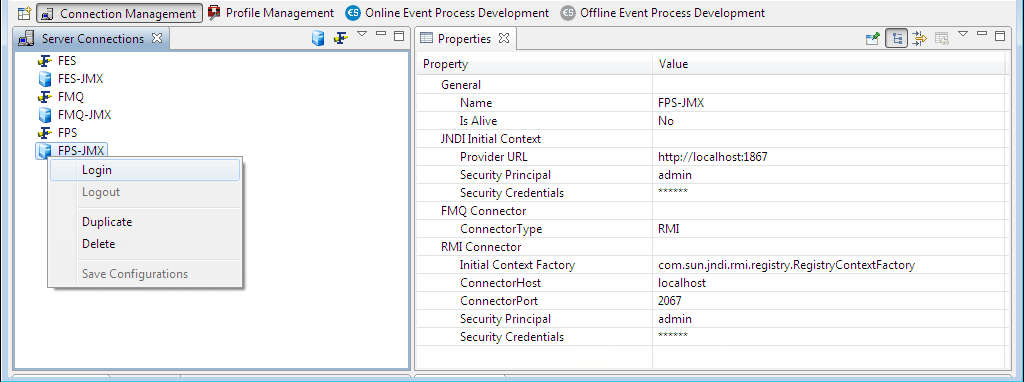
Figure 5: Login into Fiorano Peer Server's JMX interface
- After logging in, navigate through JMX Connection > Fiorano > socketAcceptors > Port-1 > ConnectionManager > ConnectionManager and select config node.
- In the Properties panel displayed on the right side, replace the value of the Port property to the new one.
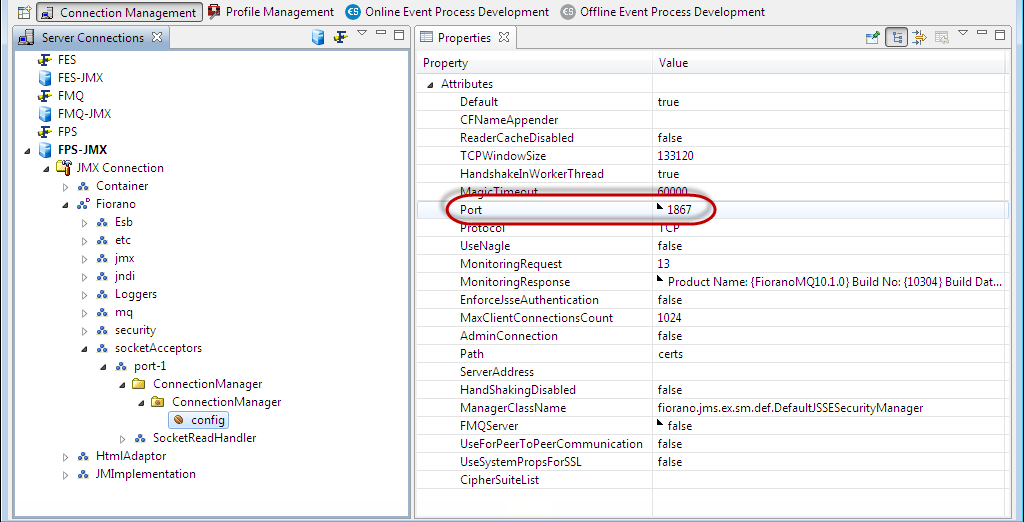
Figure 6: FPS Server Port
- As the port value is changed, a warning pops up with message prompting to save the changes and restart the server. Click OK.

Figure 7: Message dialog box
- Right-click FPS-JMX node and select Save Configurations option to apply the changes made.
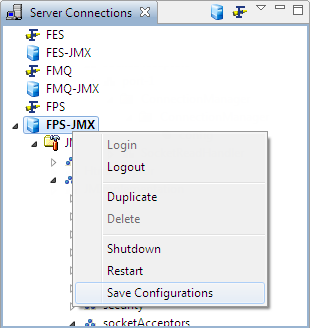
Figure 8: Save Configurations
- Restart the server to get the changes into effect.
RMI Server Ports
Ports that are opened to facilitate the communication between FPS with JMX clients are known as RMI Server Ports.
RMI ports can be configured in either offline or online mode.
Offline
Perform the following actions to configure RMI Server Ports after stopping the FPS server:
- In Profile Manager (Show View > Other > Fiorano > Profile Management) window, right-click Profiles node and load FPS profile.
- Click the FPS node and navigate through Fiorano > JMX > Connector and select the RMIBasedJMXConnector node.
- In the Properties of RMIBasedJMXConnector panel displayed on the right side panel and replace the value of the RMIServerPort property with the new one.
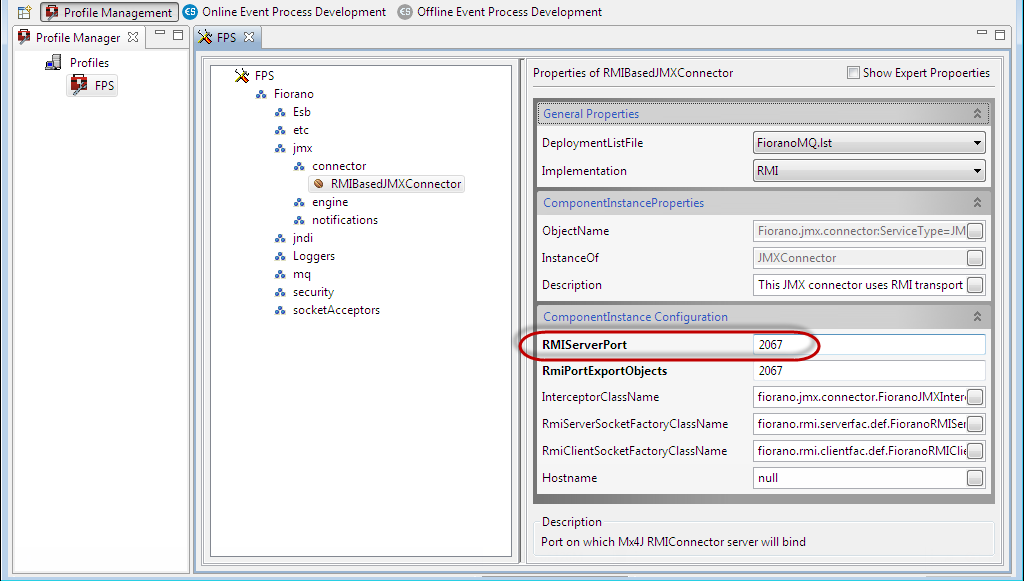
Figure 9: FPS RMI Port
- Right-click FPS node and select Save to apply the changes made in the profile (see last point in Server Port Configuration—Offline mode section). Also, start the FPS server.
Online
Perform the following actions to configure RMI Server Ports with the FPS server running:
- In Server Connections (Show View > Other > Fiorano > Connection Manager) window, right-click FPS-JMX node and select Login option to load FPS-JMX node.
- After logging in, navigate through JMX Connection > jmx > connector > JMXConnector > RMI > RMIBasedJMXConnector and select config node.
- In the Properties panel displayed on the right side, replace the value of the RMIServerPort property with the new one.
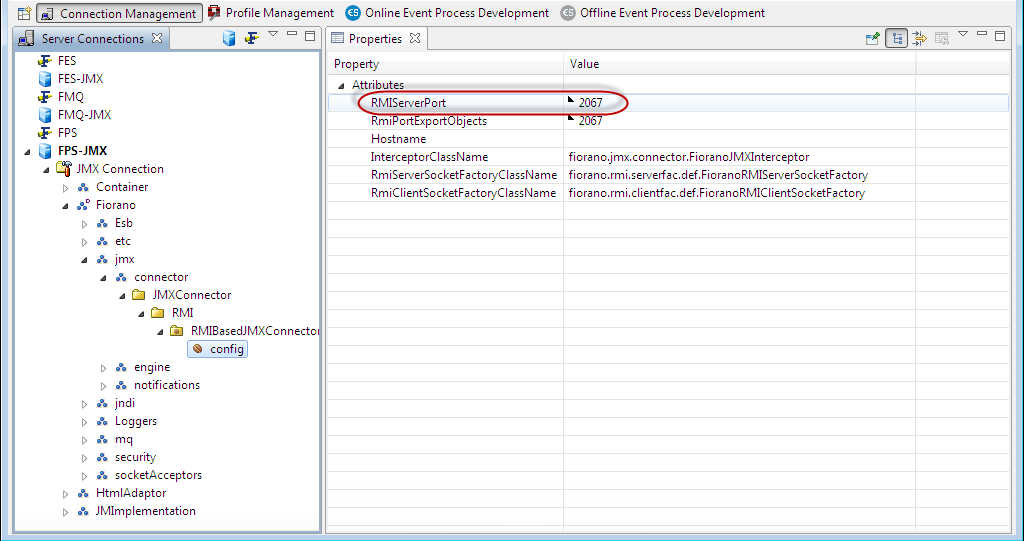
Figure 10: JMX Explorer
- Save the properties and restart the server (follow last 3 points in the Server Port configuration—Online mode section) .
Memory Configurations
Better server performance is possible with proper configuration of JVM parameters, particularly those related to memory usage. The allocation of memory for the JVM is specified using -X options when starting the server.
| JVM Option | Description | Default ESB Settings |
|---|---|---|
-Xmx | Maximum heap size | 512MB |
-Xms | Initial heap size | 256MB |
-Xss | Stack size for each thread | JVM default (120k) |
Configuration Steps
Open the server.conf located in %FIORANO_HOME%/esb/server/bin directory and change the values for –Xms and –Xmx argument under <jvm.arg> tag. If no value for –Xss is specified, the default value is used.
Java Configurations
The Peer Server requires JRE version 1.5 or above to be used for successful operation. The JAVA_HOME setting can be configured for the Enterprise Server as follows:
UNIX:
The Peer Server, by default, uses JAVA_HOME value set for the console. This can be overridden by specifying the JAVA_HOME value in %FIORANO_HOME%/fiorano_vars.sh file.
Windows:
JAVA_HOME is, by default, set to %FIORANO_HOME%/jre1.6.0_30 (shipped with the product) in %FIORANO_HOME%/fiorano_vars.bat file. To make the server use a different JAVA_HOME, modify the default value.
Changing to different ESB Network
This section provides information on configuring a Peer Server onto a different ESB Network.
Offline Mode
After stopping the FPS server, perform the following actions to configure Peer Server to a different ESB network:
- In Profile Manager (Show View > Other > Fiorano > Profile Management) window, right-click Profiles node and load FPS profile.
- Click the FPS node and navigate through Fiorano > Esb > Peer > Transport > FPSTransportManager and select the EnterpriseServer node.
- In the Properties of EnterpriseServer panel displayed on the right side panel and replace the values of the Server properties with the ones pertaining to the new network.
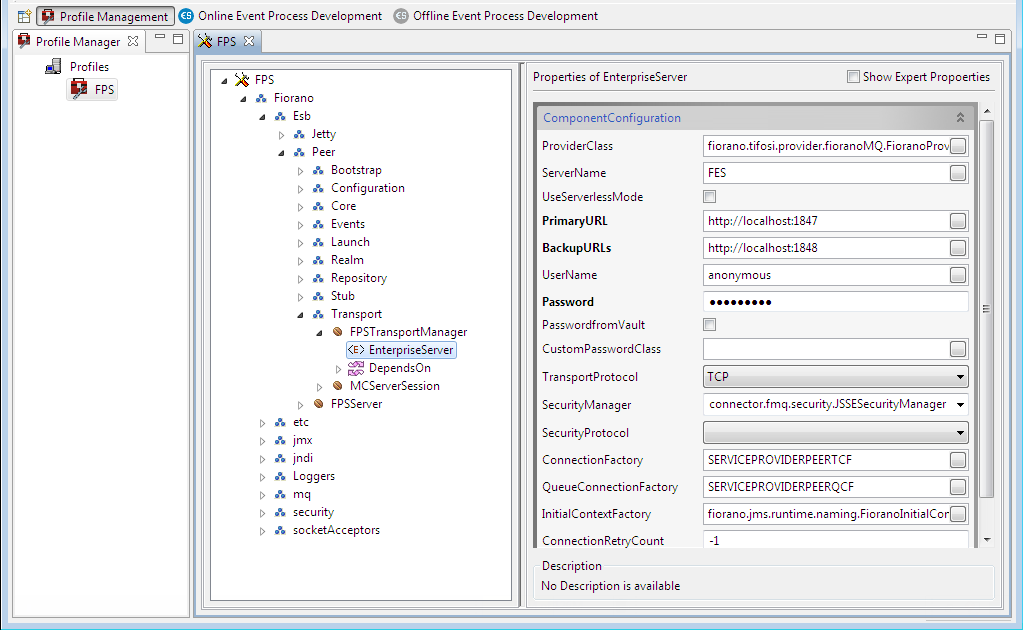
Figure 11: Configuration of Enterprise Server properties
The following table provides the details of the transport configuration attributes:
| Attribute Name | Description | Default Value |
|---|---|---|
ServerName | Name of the Fiorano Enterprise Server to connect to | FES |
PrimaryURL | Primary URL of the FES server | http://<FES Primary IP>:1847 |
BackupURLs | Backup URLs separated by semi-colons are used when FES at the primary URL is not available. | http://<FES Secondary IP>:1848 |
Username | Username to be used to create a connection with the FES | Anonymous |
Password | Password to be used while connecting to the FES | Anonymous |
ConnectionFactory | TopicConnectionFactory to be used to create the JMS Connection with the Enterprise Server | primaryTCF |
QueueConnectionFactory | QueueConnectionFactory to be used to create the JMS Connection with the Enterprise Server | primaryQCF |
ConnectionRetryCount | Number of times the Peer should try to connect to the FES if the connection is not available | 1 implies infinite retries - -1 |